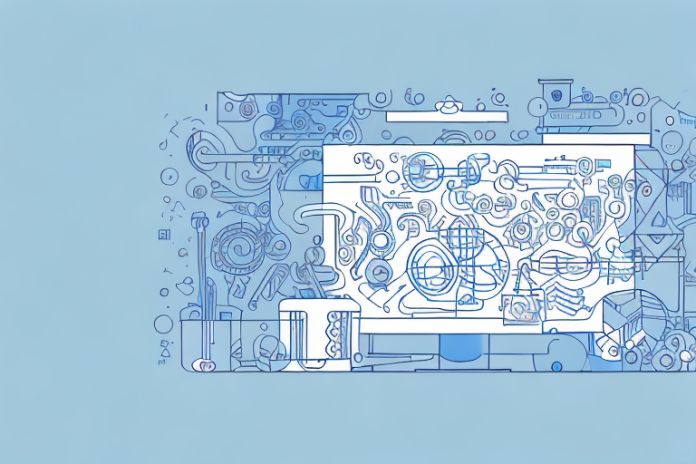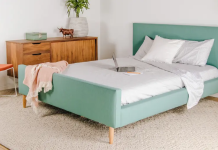Product design is the process of ideating, developing, and constantly refining products to meet specific market needs and solve user problems. A product designer helps create products that customers or users would love. Imagine if you knew exactly what people would want at any point in time. It would be so easy to create a perfect product for them. However, we live in a world filled with uncertainties. Even some users can’t fully identify what they want. This leaves the bulk of the task on the product designer to design a great product that users would be willing to pay for. There are majorly two major types of product designs which can be hardware or software product designs.

In this post, we take an extensive look at the five elements of product design which are as follows: Functionality, Aesthetics, Ergonomics, Material Selection, and User Experience Design elements are necessary and from the doctrine of product design or development. If you’re new in the product design field or you’re already a designer but would love to refresh and gain better knowledge on product design, then this post is for you.
#1. Functionality
Functionality is the ability of a product to effectively and efficiently fulfill the purpose it was designed for. The success of product designs would greatly rely on their functionality. For a product to perform well, it must not only meet the basic requirements but it must also ensure that the user enjoys it and is satisfied with it. Functionality covers both practicality and usability which includes factors like ease of use, intuitive controls, and logical workflows. A good product design should be user-friendly and it should have very clear instructions and feedback to guide the users. It should offer an experience that is hassle-free while making sure that complexity is minimized and there is no need for extensive learning.
A good functionality of product designs can guarantee that the product will perform well. A good designer must make sure that a product performs its intended function reliably and consistently. To address any design issues or problems, thorough testing and prototyping must be carried out. Product designs can be improved by continually assessing and refining their functionality. This way, designers would deliver products that meet the needs of their users and give them a great experience.
#2. Aesthetics
Aesthetics are more than just superficial beauty in product designs. They’re about bringing emotions, capturing attention, and shaping the user experience. Our world today is visually-driven which makes aesthetics an important factor in product design, integral to its success. Beyond visual appeal, aesthetics also contributes to the functionality of a product. They include layouts, intuitive visuals, and helpful cues that easily guide users as they interact with the product. Aesthetics ensures that complex tasks are simplified which makes the user experience smoother. The impact of aesthetics begins with the first impression a product makes. A well-designed product that is visually appealing would likely attract more users than a confusing product. However for users to continue using and enjoying the product after its first impression, aesthetics must be maintained. Users interact with a product once they are engaged with it. Providing clear instructions and intuitive design elements that make it easy to navigate a product would greatly influence the user journey. This would create a positive experience and users would be satisfied as they use the product.
Furthermore, aesthetics is like a bridge that connects products to their users. It makes your users emotionally connected and it also creates a lasting impression. With the market today being very competitive, combining a great deal of aesthetics with functionality would always keep a product design at an advantage over others.
#3. Ergonomics
Ergonomics in product design is about creating products that are comfortable, efficient, and user-friendly. It’s about making a product that would fit the user and not the reverse. As designers spend time studying how people move and interact, they design products that would fit the user’s natural behaviors. Some examples would be a chair that supports your back, a keyboard that fits your hands, and other products that feel so natural to hold. Ergonomics isn’t just about comfort. It also considers how we think and learn. Designers can create a clear set of instructions, controls, and helpful feedback to keep confusion at a minimal level. This way the users don’t end up frustrated.
Ergonomics aims to eliminate confusing experiences with products. When designers create products that adapt to our bodies and minds, we can interact with them more easily and with better efficiency. This would reduce any strain as you wouldn’t stress your mind in trying to figure out how to use the product. It would also give you an enjoyable experience. At any point you see a product that just feels so right, don’t forget how ergonomics came into play. It greatly impacts how we experience our world.
#4. Material Selection
Choosing the right materials is another important factor in product design. Materials could act like a building block that would determine how a product would look, function or even feel when you touch it. It’s not always about colours as the choice of materials can also determine how durable a product would be and the extent of performance. If you’re a designer or you’re aspiring to be one, you must ensure to select the right materials when you have considered the product’s intended users, the purpose of the product, and also the process by which the product would be manufactured. When you choose the right materials, you’re sure to improve the strength, performance, and real environmental impact of that product. This way you create products with fewer environmental hazards. Materials have their limitations too. Some might require very special tools and would be expensive while others can be cost effective. It’s important to consider your needs and the financial budget of the product. This way you can determine the best materials that would best fit your budget.
The software products aren’t also left behind as product design also covers both software and hardware. When working on software products, the materials involved would also be software. A designer must select the right software to work with to build a great software product. For example, if you’re trying to design a website, you must consider the user needs like good visibility, loading speed, data storage, etc. With this knowledge, you can decide the best programming language to use, the packages to install, the platforms to store data, and many more. This form of material selection can also be applied to graphic designs and many other software applications in different fields.
#5. User Experience Design
User experience design cannot be overemphasized in product design. In simple terms, it is the experience a user has with a product. User experience design aims to create a seamless interaction between the product and the user. The designer must understand the needs of the users and what they expect. Also, the designer must look out for the user’s behavioral patterns to design intuitive products that would satisfy the user.
The success of a product would also rely on a well-designed user experience. As businesses aim to increase customer satisfaction and drive customer loyalty, They must make sure that the user experience designs for their products are top-notch. This would also differentiate their product making it stand out amongst other products. Therefore, having an aesthetically pleasing product is not just sufficient enough, it should be something that can be interacted seamlessly with.
Frequently Asked Questions About Elements Of Product Design
How long does it take to learn product design?
On average it would take four years to master product design. Learning would depend on your pace therefore committing more hours daily can reduce the time to master.
What is the most important element of product design?
All elements of product design are very important and all should be given a good weight of importance. This way you’re sure not to compromise on quality in any way.
What would it Cost to Learn Product Design?
The cost of learning product design is not definite as different organization can charge different amounts to train you. If you’re looking for cost-effective ways to learn, you can leverage YouTube or search for free platforms on Google.
What do I become when I learn product design?
You become a product designer and would be responsible for designing products that meet user needs.
Where can I work as a product designer?
You can work in a wide range of companies. So long as the company makes products that can either be hardware or software, the services of a product designer would be needed.
Do I need a laptop to learn product design?
A laptop might not be necessary during the learning phase. However, it’s strongly recommended to have a laptop so you can learn effectively without limitations
Would I write code in product design?
Many product designers do not write code. Even though in some areas you might need a little bit of code, many new development software do not require designers to write code.
Which laptop is best for product design?
There are a wide variety of laptops to choose from. It’s important to choose a laptop with a high amount of RAM and good processors to have a good experience with designing.
Conclusion
Product design is an amazing field in tech to venture into. When you have mastered these elements you’re sure to build very amazing products that would stand out in a competitive space. It’s very important to take all these elements as important and not to look down on any.
Editor’s Recommendations
References
Hotjar – A complete guide to product design: definition, process, and challenges
China2west – Designing Success: 5 Fundamental Elements of Product Design




